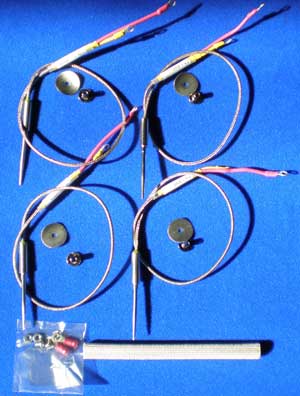 During the 30’s when aircraft instrumentation first began to make their appearance, aircraft engine management system meant an airspeed indicator, turn-bank coordinator, manifold pressure, altimeter, engine RPM, compass, and the climb-dive indicator.
During the 30’s when aircraft instrumentation first began to make their appearance, aircraft engine management system meant an airspeed indicator, turn-bank coordinator, manifold pressure, altimeter, engine RPM, compass, and the climb-dive indicator.
Navigation meant a magnetic compass mounted in front of the pilot and there was another compass in his pocket just in case he had to bail out which back then, was quite frequent. Pilots flew a couple of hundred feet above tree tops so they could navigate by roads, landmarks and railway tracks. Pilots flew at night only if they had no option. More often than not, they would miss their destination by hundreds of miles and also required bonfires on the field during landing. Fatal accidents were routine and the plane would invariable have to be written-off.
We’ve come a long way from aircraft management systems of the 30’s. Today aircraft engine management systems especially the aftermarket ones of the type designed by J.P. Instruments – World leader in twin engine management systems; include real time information such as OAT, IAS, ALT and ROC. Vibration data monitor are also a new development and could help detect structural fatigue before it becomes dangerous.
Of course, development of aircraft twin engine management systems at J.P Instruments did not happen over-night. Joseph Polizzotto (Joe) founded J.P. Instruments after he successfully planned and designed the ‘Scanner’ in 1979. The Scanner was a revolutionary new aircraft instrument that automatically and constantly tested and displayed aircraft engine temperatures.
Soon, a whole series of new aircraft instruments were developed and there was no looking back. Their star instruments include intelligent fuel flow gauges, engine data management systems, GPS moving maps and so on. Being innovative engineers as well as experienced pilots helped develop aircraft instruments that really mattered and help improve flight safety.
Today, aircraft Twin Engine Management Systems designed by J.P. Instruments include the EDM 760, EDM 790 and EDM 960.
The EDM 760 is one of the most advanced and accurate piston engine-monitoring instruments on the market. The EDM 760 will monitor your engine parameters three times a second and will warn you instantly if any parameter exceeds the programmed limit. Computer Assisted Diagnostics for troubleshooting entire system from the cockpit, all programming is done from the Front Panel, using two simple buttons. It has 29 alarms, including EGT Differential, Alternator Voltage, Fuel Flow and Shock Cooling.
The EDM 790 on the other hand, monitors twenty-four critical Aircraft flight instruments parameters four times a second, with a linearized thermocouple accuracy of better than 0.1 percent or 2 F° which has been verified and tested by the FAA and thus TSO’d (Technical Standard Order).
The EDM 960 is a state-of-the-art certified primary flight instrument. With the EDM 960 on board your twin engine aircraft, you can remove many of your old engine gauges, and open up valuable space in your panel. Featuring one DAU per engine, only 2 wires run back to the display in the cockpit. No thermocouple wires in the wings! Fly with confidence as your EDM960 acts as your full time on-board flight engineer.
